
South Gloucestershire
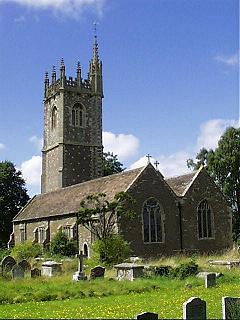
This church with its noble west tower is well known to regular rail travellers on the Bristol to Birmingham and Cardiff to London lines where it can be seen clearly from the high embankments which carry the lines through this small village. The first mention of the village seems to be the granting of the church to the Monks of Glastonbury to pray for the soul of the murdered King Edmund (the Grand) who died during a banquet at nearby Pucklechurch. During the reign of King John the Manor, together with those of Pucklechurch and Abson, was traded by the monks with the Bishop of Bath and Wells in return for the right to elect their own abbot. These three villages remained in the diocese of Bath and Wells until after the reformation, but are now in the diocese of Bristol.
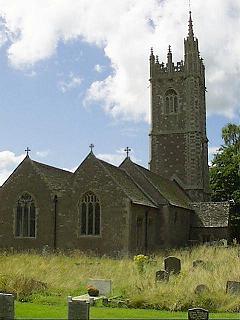
The church is built of Pennant stone, with Bath stone dressings. David Verey, writing in Gloucesteshire: The Vale and The Forest of Dean (Buildings of England Series) calls the stone unnattractive but it reflects the local area and blends in well. The church consists of a West Tower, north porch, and nave & chancel with a continuous south aisle the length of the building.
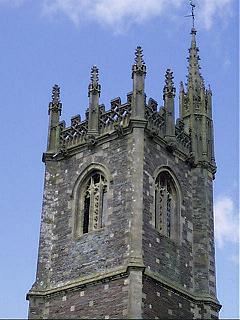
The tower is undoubtably its best feature, tall and slim of three stages with diagonal buttresses, northeast octagonal stair turret culminating in an ornate panelled turret with recessed crocketed spirelet and pierced embattled parapet with seven other slim crocketed pinnacles. The tower has a kind of chequerboard appearance too with the high number of facing stones placed irregularly over its surface. Like most of the church this dates from the C15 and is Perpendicular in style. The three light bell openings and the west window are typical of the period.
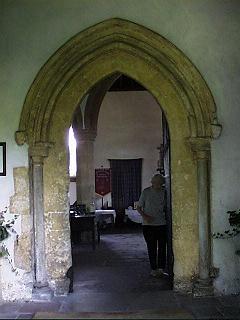
The oldest part of the church is however the north wall of the nave, where a C13 lancet window remains to the east of the porch which shelters a pretty Early English period doorway. The door itself seems to be of the same period (not seen here as the keyholder kindly props the door open).
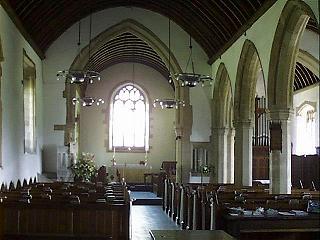
The interior is quite broad and spacious, with the aisle internally subdivided by and arch alongside that of the chancel. Five-bayed nave arcade, and a further two-bayed arcade between chancel and chapel. If you look closely at the south respond of the chancel arch you will see that it was originally lower. It was heightened when the arch was rebuilt in the restoration of 1895-6 following a bad fire (see photograph by the north door). A large hagioscope or squint is inserted in this south respond too to allow worshippers in the south aisle to have a glimpse of the altar.
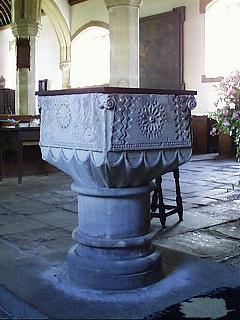
Opinions differ as to the age of the font. The local guidebook, and several other writers do not doubt its authenticity as a Norman font. However Verey dismisses it as a C17 forgery. It certainly is an odd design with a square decorated bowl on a scalloped base standing on a fat circular column. I will leave you to make up your mind, but I wonder why the craftsmen of the C17 would wish to reproduce something from the C12. If this is true then this font is more interesting as a fake! In the background can be seen the huge Royal Arms of George II.
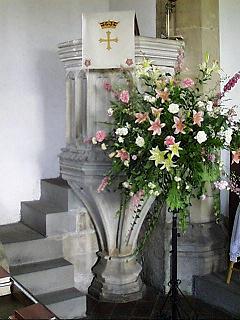
There is no doubt about the age of the stone pulpit however.This is fifteenth century work, its elegant goblet shape somewhat marred by the crude modern steps by its side.
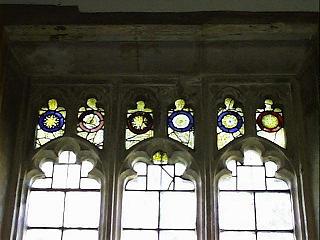
The large window by the pulpit is also C15 and Perpendicular work, with square head and panelled tracery. In this tracery is preserved the only remaining fragments of medieval stained glass to have survived. Prior to the Reformation, most churches were alive with colour, both from stained glass and wall paintings, as well as having statues and other imagery. It is hard to imagine the difference when we look at the blank walls and windows of today (see the east wall of the chancel in the interior picture above for example).
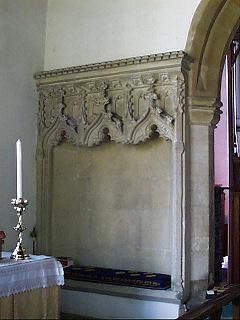
In the sanctuary is a rather stark example of stone sedilia. It is "not very elegant" according to Mr Verey, and I have to agree. It is also a sharp contrast with its wealth of ornamentaion to the rest of the church. Elsewhere in the church little survives although there is an empty niche in the nave arcade; the church is also devoid of any interesting memorials, although there are some damaged C17 and C18 tablets
.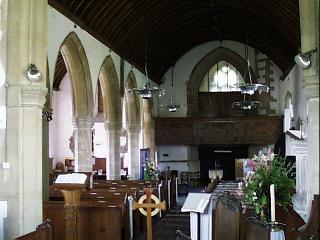
From the chancel a look back into the nave shows the small C18 west gallery, which incorporates earlier panelling of 1638 below.
AND FINALLY......local rumour has it that there is a underground tunnel that leads westwards from the church, under the pub to the cottage next door. Now if it led to the pub I might believe it!!! (Thanks to Rosie in Texas for reminding me of this story).